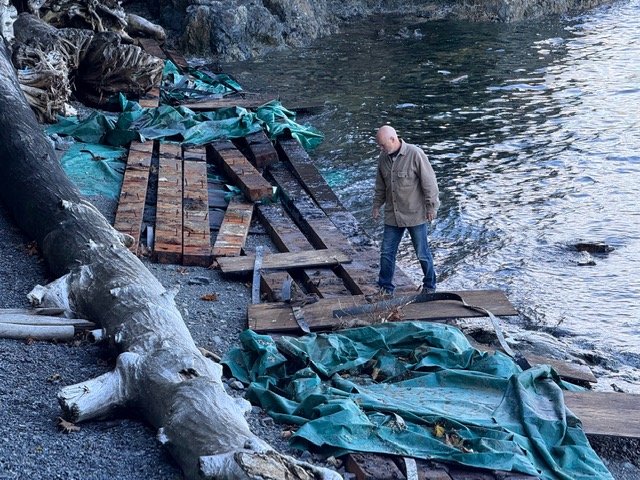Newly Updated Best Practices Guide for Marine Docks
A Consolidation of Current Regulations and Recommendations for Protecting the Marine Ecosystem
If you are involved in the design, construction, maintenance or removal of marine docks and associated infrastructure around the Átl'ḵa7tsem / Howe Sound region, we highly recommend this new and updated resource.
This guide includes Marine docks, wharfs, piers, floats, buildings, and associated pilings and moorings, all of which are important components of coastal life in this biosphere region. However, when not designed, constructed, or disposed of with care, they can become detrimental to marine life.
We published our first document outlining best practices for marine docks in 2021. Since then, we have heard more questions and feedback, regulations have changed, and we have also recognized the need for more information on end-of-life disposal, or in other words, forming a cradle-to-grave approach.
We are pleased to announce the publication of version 2.0, a revised and updated document. Whether you are planning to build or upgrade a dock, a local government and/or First Nations administrator receiving referrals for dock permitting, or conservationist looking to engage your local community on how best to advance the co-existance of marine docks and marine life, you will find this best practice guide useful, including links to suppliers.
This consolidation of current regulations and guidelines were developed in response to the need to prevent marine debris from entering the marine environment. Increasingly, severe storm events, aging marine infrastructure, and poor construction have created ongoing problems for marine pollution and ocean health. With numerous government agencies involved in the approval of marine infrastructure, this guide consolidates the latest information into a single document.
This is not prescriptive, nor do we have authority over other agencies responsible for permitting. This document is to inspire better care and management of our fragile environmental recovery in Howe Sound as the population and development pressures increase.
Download the PDF here or Download a Word document if you want to extract relevant information for your own organization’s or authority’s needs.
Below are some FAQs.
-
No. This is a best practices guide for the design, development, construction, maintenance and end of life disposal of docks used in a marine environment.
The Province of British Columbia does have a few dock management plans for marine and freshwater docks that it administers and enforces in different areas of the province.
-
It is highly recommended that you retain the services of qualified professionals where required.
Depending on the complexity and environmental situation, a Professional Engineer may be required to design your dock so that it’s safe and can withstand the harsh west coast environment. This may be a requirement of your dock tenure application to the Province.
The marine ecosystem is a delicate balance of biodiversity and it’s quite possible for humans to upset this balance with the introduction of foreign materials and structures into the environment. Section 1 (3) of the guide details various Qualified Environmental Professionals that you may need to consult in order to protect this delicate habitat.
-
Yes. But care must be taken in the selection of which pressure treated lumber will not harm the marine ecosystem. There are many chemical treatments and species of lumber that are used for treating lumber, but there are only a few that are acceptable for use in a marine environment. Appendix A of the guide provides details as to acceptable lumber and treatments that can assist in your selection of lumber that will not harm the marine ecosystem and will maximize the lifespan of you dock.
-
This is a critical first step in your design considerations. The retaining of a QEP (Section 1.3 of the guide) will determine what is in the benthic (seafloor) ecosystem where you want to build your dock.
Depending on the slope, depth, material (rock, sand, mud), vegetation (seagrasses like eelgrass), types of sea life (fish, shellfish) will all have a determination on what lives below the dock that needs to have a consistent supply of light in order to protect and conserve the marine ecosystem.
Many thanks to Ian Winn for his hours of work on this document. We welcome feedback, comments and recommendations via this form.
Please send us your photos of new docks following Best Practices to info@howesoundbri.org.






